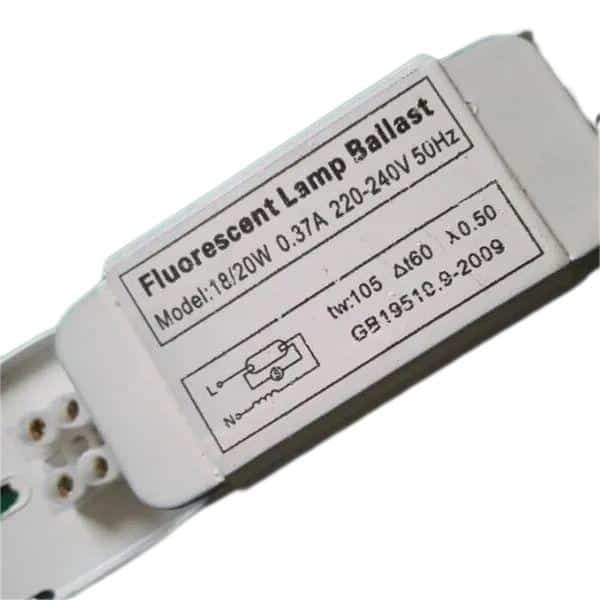Fluorescent lights are used a lot in offices, factories, and even in houses because they use less electricity and last a long time. But, like anything electrical, the ballast in your fluorescent light can wear out over time. The fluorescent ballast is really important in your fluorescent light because it controls the electricity going through the light. If the ballast starts to break, it can cause all sorts of problems, from your lights flickering to your lights not working at all.
A bad ballast for your fluorescent light will make your light flicker, make noise, or take a long time to turn on. You can use a multimeter to check if the ballast is bad or look at it to see if you can tell if it’s broken.
Knowing what a bad ballast looks like will help you fix it before it causes you problems and costs you a lot of money. In this guide, we’ll talk about what a bad ballast looks like, how to check if it’s bad, why it might break, and what to do if you need to fix it.
Common Signs of a Bad Fluorescent Ballast
There are several telltale signs that indicate a fluorescent ballast is going bad. Catching these signs early can help prevent further damage to your lighting system.
Flickering Lights
One of the most common signs of a failing ballast is flickering lights. If your fluorescent tubes are constantly flickering or struggling to stay on, the ballast may be having trouble regulating the current. In some cases, the light may flicker intermittently, while in others, the flickering can be continuous. Flickering can also cause the tube light to fail prematurely, as the constant switching on and off stresses the electrodes inside the lamp.
Buzzing or Humming Noise
A buzzing or humming noise coming from the light fixture is another common sign of a bad ballast. This sound is usually caused by the ballast’s internal components struggling to regulate the voltage and current, leading to electrical noise. A properly functioning ballast should operate silently, so if you hear a buzzing sound, it’s likely time to inspect or replace the ballast.
Delayed or No Startup
Fluorescent lamps are designed to light up quickly, especially if they’re paired with an electronic ballast. If you notice that your fluorescent light is taking longer than usual to turn on, or if it doesn’t turn on at all, the ballast may not be providing the correct initial voltage to ignite the lamp. Delayed startup or failure to start can indicate that the ballast’s components have deteriorated.
Dimming or Inconsistent Light Output
If your fluorescent lights are dimming or producing an inconsistent amount of light, this is another sign that the ballast is failing. A bad ballast may not be able to maintain a steady electrical current, resulting in uneven light distribution or dimmer-than-usual output. Inconsistent light levels can be especially noticeable in larger fixtures with multiple lamps, where one lamp may appear brighter than the others.
Burning Smell or Physical Damage
In some cases, a bad ballast may cause the fixture to emit a burning smell or show signs of physical damage, such as burn marks or melted plastic. This typically happens when the ballast overheats due to prolonged use or faulty components. If you detect a burning smell or notice any physical damage, it’s important to turn off the power immediately and replace the ballast, as it could pose a fire hazard.

How to Test a Fluorescent Ballast
If you suspect that your ballast is bad, there are several steps you can take to confirm its condition. Testing a ballast can be done with basic tools, including a multimeter and a visual inspection.
Step 1: Turn Off Power
Before you begin any electrical work, always turn off the power to the fixture at the circuit breaker. This is essential for your safety and to avoid any accidental shocks.
Step 2: Visual Inspection
Perform a visual inspection of the ballast and the entire light fixture. Look for any obvious signs of damage, such as burn marks, corrosion, or melted components. If you see any physical damage, the ballast is likely bad and should be replaced. You should also check the fluorescent tubes themselves for blackened ends, which can indicate that the ballast is overloading the lamps.
Step 3: Use a Multimeter
A multimeter can be used to test the ballast’s electrical output and determine if it’s functioning properly. To test the ballast:
- Set the multimeter to measure resistance (ohms).
- Disconnect the wires from the ballast and test the continuity between the input and output wires.
- If the ballast has no continuity (an open circuit) or gives a very high resistance reading, it’s likely faulty and needs to be replaced.
Step 4: Check the Tubes
Sometimes, the fluorescent tubes themselves can be faulty, and the problem may not lie with the ballast. Swap out the current fluorescent tubes with new ones and see if the fixture lights up properly. If the new tubes still don’t work, the ballast is the likely culprit.
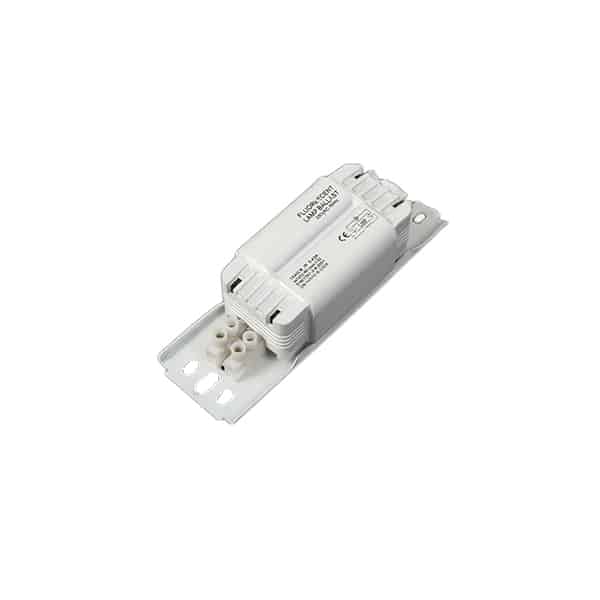
Common Causes of Ballast Failure
Ballasts are durable, but several factors can cause them to fail over time. Understanding these causes can help you take preventive measures to extend the lifespan of your lighting system.
Overheating
Overheating is one of the most common causes of ballast failure. Ballasts generate heat during operation, and if they are not properly ventilated or are exposed to high temperatures, their internal components can degrade. Ballasts in poorly ventilated or enclosed fixtures are more likely to fail due to heat buildup. Excessive heat can cause the insulation inside the ballast to melt, leading to shorts or complete failure.
Old Age
Fluorescent ballasts have a finite lifespan and typically last 10 to 15 years before they start to wear out. As ballasts age, their components—such as capacitors and transformers—begin to degrade, resulting in performance issues like flickering, delayed startup, and inconsistent light output.
Voltage Fluctuations
Frequent voltage fluctuations or power surges can damage the internal components of a ballast. Ballasts are designed to operate within a specific voltage range, and when the voltage exceeds this range, it can cause the components to overheat or fail. Using a surge protector or voltage stabilizer can help protect your lighting system from damage due to power surges.
Poor Installation or Incorrect Wiring
Improper installation or wiring errors can also lead to premature ballast failure. If a ballast is not installed according to the manufacturer’s specifications, it may not be able to regulate the current and voltage properly. This can result in overheating, flickering, or other issues. Always ensure that ballasts are installed correctly and that the wiring is properly connected to prevent premature failure.
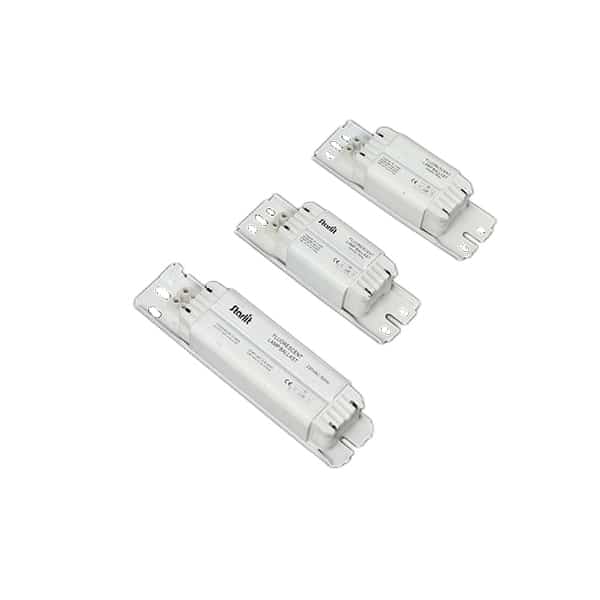
What to Do If Your Fluorescent Ballast Is Bad
If you’ve determined that your fluorescent ballast is bad, there are several steps you can take to resolve the issue.
Replace the Ballast
In most cases, the best solution is to replace the ballast. Ballasts are relatively inexpensive and easy to replace, especially in standard fluorescent light fixtures. When selecting a replacement ballast, be sure to choose one that matches the specifications of your light fixture and lamp type.
Consider Upgrading to an Electronic Ballast
If you’re still using an older magnetic ballast, it might be worth upgrading to an electronic ballast. Electronic ballasts are more energy-efficient, quieter, and provide better performance compared to magnetic ballasts. They also reduce flickering and improve lamp longevity, making them a smart investment for any fluorescent lighting system.
Call a Professional
If you’re unsure about how to replace a ballast or if your lighting system is more complex, it’s a good idea to call a professional electrician. A licensed electrician can safely replace the ballast and ensure that the fixture is properly wired and functioning as it should. Professional help is especially important in commercial settings where multiple fixtures and high-voltage systems may be involved.
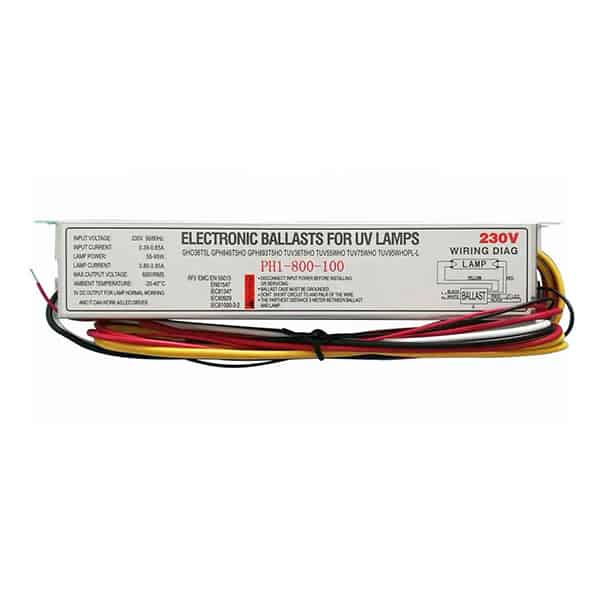
How to Extend the Lifespan of Your Fluorescent Ballast
There are several ways to extend the life of your fluorescent ballast and prevent future failures.
Proper Ventilation
Make sure that your light fixtures have adequate ventilation. Overheating is one of the leading causes of ballast failure, so keeping the ballast cool is essential. Ensure that the fixture has enough airflow to dissipate heat, and avoid placing fixtures in enclosed spaces where heat buildup can occur.
Regular Maintenance
Perform regular maintenance on your lighting system to prevent dust and debris from accumulating on the ballast and surrounding components. Dust buildup can cause the ballast to overheat, so keeping the fixture clean will help prevent unnecessary wear and tear.
Stable Voltage Supply
Using a voltage stabilizer or surge protector can help protect your ballasts from power surges and fluctuations. Ensuring a stable voltage supply will reduce the risk of damaging the ballast’s internal components, prolonging its lifespan.
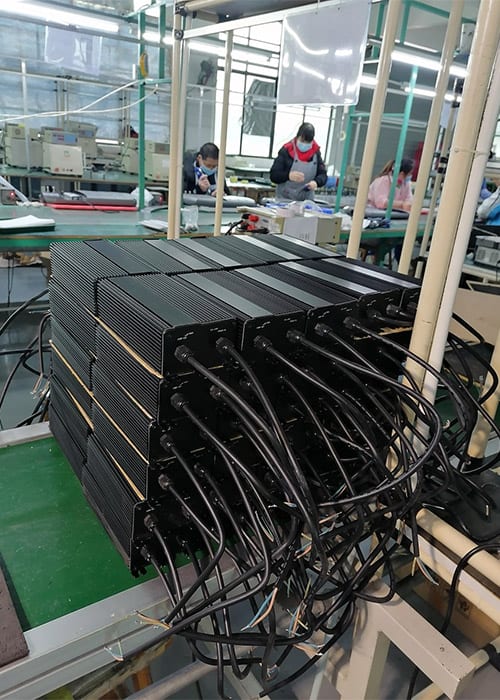
Final Words
Ballasts are important to make sure your tube lights work right, but they can break over time, like anything else that uses electricity. If you notice your lights flickering, making noise, taking a long time to turn on, or if the ballast looks broken, you need to fix it. You can use a multimeter to check if the ballast is broken and do regular things to make sure it works right.
If you upgrade to an electronic ballast, you can make your lights use less electricity and work better. If you pay attention to your ballast and fix it when it’s not working right, you can make sure your tube lights work well and are safe.

